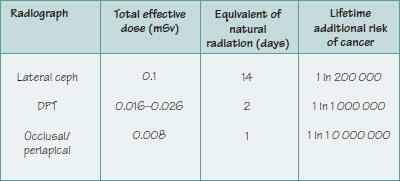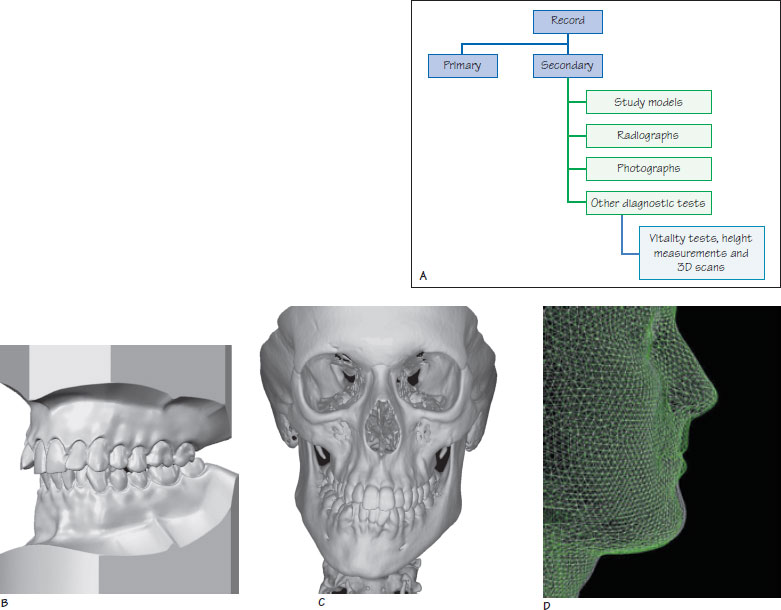19
Orthodontic records
Table 19.1 Radiation dose of some commonly used orthodontic investigations.

Figure 19.1 (A) A classification of orthodontic records. (B) Digital study model. The model can be rotated and viewed from all directions and measurements can be taken directly. (C) Cone beam computed tomography. The image can be viewed at different planes to assess the hard and soft tissues. (D) A 3D facial soft tissue scan showing the soft tissue profile before (white lines) and after (green lines) maxillary advancement surgery.

Records have a number of important functions in clinical practice. Box 19.1 lists the role of clinical records and Figure 19.1A provides a classification of records. The primary record is the written record and should include information such as patient demographics, relevant history, the findings of examination and special investigations, the diagnosis, treatment plan and a record of informed consent. It is also important to keep a record of treatment with the date and signature of the operator clearly marked. Secondary records are collected to aid diagnosis, monitor treatment and complement the primary record.
Study models
Orthodontic study models are acquired at the beginning, sometimes during, and at the end of treatment. They should be fully extended into the buccal sulcus and record all the teeth present. Angle’s trimming is undertaken to enable the occlusion to be examined at varying angles with the models placed on a flat surface. Study models have a number of uses including:
- treatment planning (e.g. space analysis);
- monitoring growth;
- monitoring treatment progress;
- patient education;
- diagnostic (Kesling’s) set-ups;
- acting as a legal record;
- audit, research and teaching.
- Diagnosis and treatment planning
- Acting as an aide-memoire
- Providing a legal document of treatment
- Providing proof to commissioning bodies that treatment was justified and conducted to a good standard
- Audit, teaching and research
Digital study models (Figure 19.1B) eliminate the problems of storage and allow computerised analysis and may become widely used in the future.
There is no need to mount study models onto an adjustable articulator for routine orthodontic care. They are only mounted, using a faceb/>
Stay updated, free dental videos. Join our Telegram channel

VIDEdental - Online dental courses


